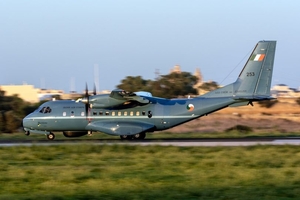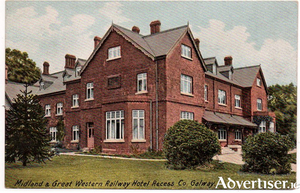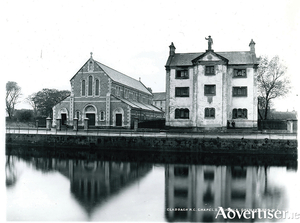Search Results for 'Galway Coast'
6 results found.
Air Corps and navy called into action to monitor Russian vessels over Galway-Iceland sub-sea cable

Irish defence forces aircraft and shis were called into action this week off the Galway coast after being alerted to the presence of two Russian Government vessels sailing in the area of the recently-laid Galway to Iceland communications subsea cable.
See for yourself what’s brewing at Galway Hooker

The Galway Hooker Craft Brewing Company is offering guided tours of its brewery in Oranmore from today (March 16), giving you an up-close look at what it takes to make an award-winning beer inspired by the famous Galway coast.
How Galway lost the Clifden railway

It is probable that if the coastal route had been chosen for the Clifden railway, rather than the Oughterard/ Maam Cross way, the line would still be viable today. The idea of the so-called ‘Balfour lines’, proposed by an enlightened chief secretary for Ireland, Arthur J Balfour, and given the go-ahead in the 1889 Light Railways (Ireland) Act, was to give far-flung towns and communities access to bigger markets, and to grasp the benefits of employment and opportunities.
The Piscatorial School

Living conditions were very bad in the Claddagh during the Great Famine. Most people there made their living from the sea but they refused to adapt to new and more effective fishing techniques which would have improved their catches, and so their income was affected and poverty ensued. Most of the fishermen there had put their nets in hock just to keep their families alive. Equally, Claddagh people were opposed to education, as their sons would grow up to be fishermen, they felt no need to send them to school. This form of opposition began to soften and eventually in 1827, a national school opened roughly where the statue of Fr Tom Burke is today. The quality of education there was not great so the Dominicans decided to take things into their own hands and build a school that would develop and improve the practical skills of seamanship and fishing for the boys to make them more self-sufficient. The girls would be taught fishery-related skills such as lace-making
Strong start sees Galway coast through to camogie semi-final
Galway 1-22 Tipperary 0-10
Claregalway heroes

In the years following the establishment of the Defence Forces, various classes of Army Reserves were experimented with between 1927 and 1939. In May 1927, a Class A Reserve was formed consisting of NCOs and men transferred to the Reserve. In January 1928, a Class B Reserve was set up with the object of building up the infantry arm of the Defence Forces. One joined voluntarily, but in doing so, committed to three months initial training and one month’s annual training thereafter. This group had practically ceased to exist by 1934.

